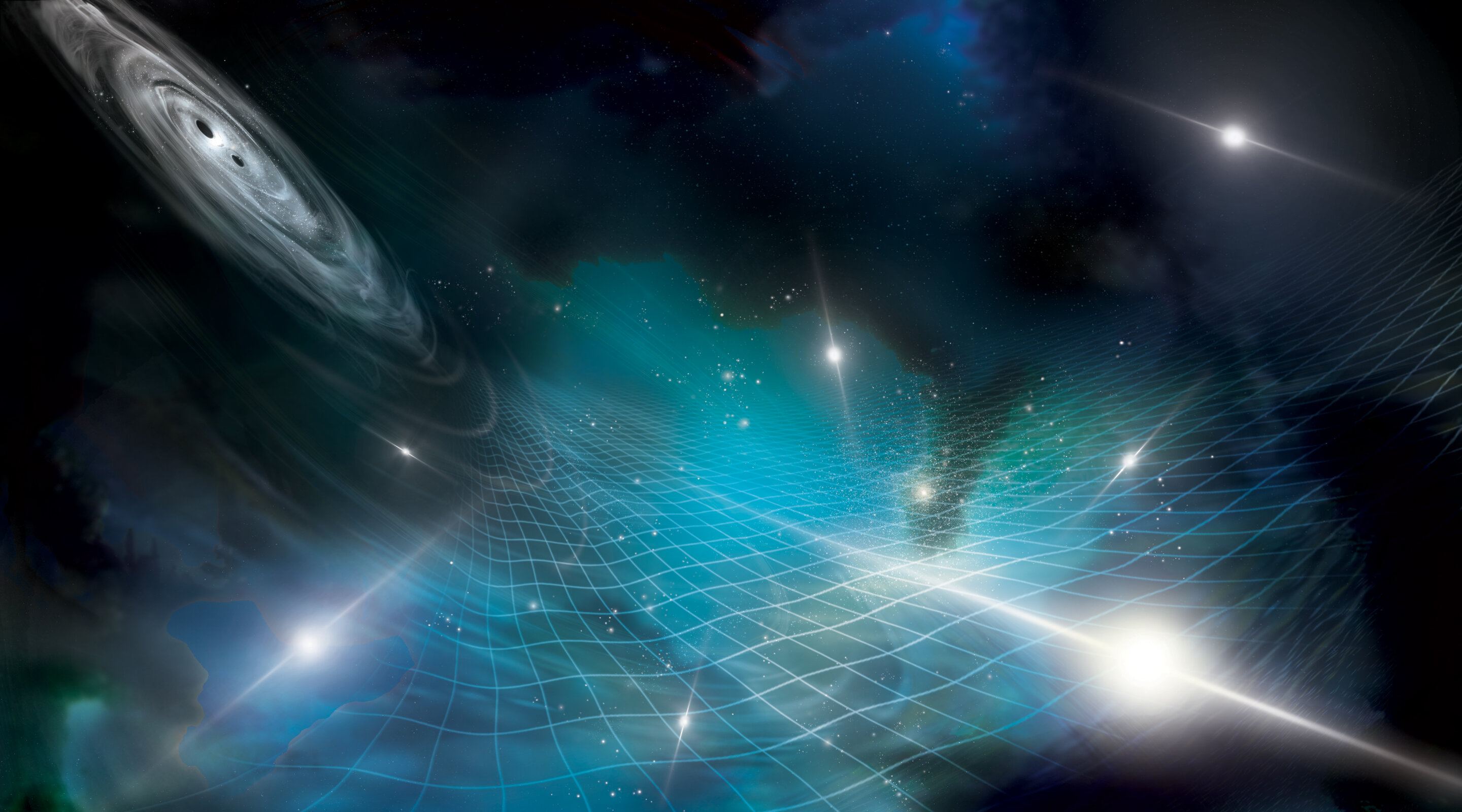In this striking portrayal, a duo of supermassive black holes emits gravitational waves that ripple through space-time, creating a stunning visual display. These waves have the power to compress and stretch the paths of radio waves emitted by pulsars, resulting in a significant breakthrough for scientists. The North American Nanohertz Observatory for Gravitational Waves (NANOGrav) recently made the remarkable discovery of the universe’s gravitational wave background after 15 years of diligent data collection.
The gravitational waves detected in this groundbreaking research are unlike any previously recorded. They are unbelievably powerful, carrying approximately a million times more energy than the gravitational waves released during black hole and neutron star mergers. Moreover, these colossal waves are most likely produced by pairs of supermassive black holes hurtling towards cataclysmic collisions throughout the cosmos.
NANOGrav scientist Chiara Mingarelli compares the effect to that of a choir, with different frequency contributions from numerous supermassive black hole pairs. This discovery provides the first-ever evidence of the existence of the gravitational wave background and offers an entirely new perspective on observing the universe.
The gravitational wave background holds immense promise for shedding light on various cosmic mysteries, such as the fate of supermassive black hole pairs and the frequency of galaxy mergers. However, NANOGrav can currently only measure the overall background rather than individual sources. Nevertheless, even this limited view has presented astonishing results. The gravitational wave background is twice as loud as expected, suggesting the presence of undiscovered mechanisms or a greater abundance of supermassive black holes than previously theorized.
This remarkable achievement marks just the beginning of a new era of exploration and understanding. It invites us to explore uncharted territories and seek answers to the most profound questions about the nature and origins of our universe.
Over the course of several years, the NANOGrav team faced the formidable task of capturing gravitational waves unlike any previously studied. These ultra-low-frequency waves have wavelengths that could span tens of light-years, making them impossible to detect using traditional Earth-based instruments. Instead, the team turned to pulsars, which act as beacons in the vastness of space, emitting radio waves at regular intervals.
Pulsars, the remnants of massive stars that have gone supernova, emit rhythmic pulses of radio waves as they spin rapidly. These precise pulses were meticulously timed by NANOGrav scientists over a span of 15 years using observatories such as the Arecibo Observatory, the Green Bank Telescope, and the Very Large Array. By observing the changes in timing caused by the passage of gravitational waves, the team was able to detect the elusive gravitational wave background.
The successful detection of the background in 2020, after more than a decade of data collection, marked a milestone for NANOGrav. The next step is to delve deeper into the sources behind this hum of gravitational waves. The most likely candidates are pairs of supermassive black holes, which can merge over millions of years, emitting energy in the form of powerful gravitational waves.
This discovery not only provides insights into the final parsec problem but also allows cosmologists to estimate the frequency of galaxy collisions throughout cosmic history. Furthermore, alternative sources of gravitational waves, such as cosmic strings predicted by string theory or theories proposing a precursor universe to the Big Bang, may also contribute to the detected signals.
The NANOGrav team’s groundbreaking achievement opens up a world of possibilities and confirms that we are just scratching the surface of our understanding of the universe. With each new discovery, we inch closer to uncovering the secrets that reside beyond our own planet and towards grasping the true nature of our existence.
Denial of responsibility! TechCodex is an automatic aggregator of the all world’s media. In each content, the hyperlink to the primary source is specified. All trademarks belong to their rightful owners, and all materials to their authors. For any complaint, please reach us at – [email protected]. We will take necessary action within 24 hours.

Jessica Irvine is a tech enthusiast specializing in gadgets. From smart home devices to cutting-edge electronics, Jessica explores the world of consumer tech, offering readers comprehensive reviews, hands-on experiences, and expert insights into the coolest and most innovative gadgets on the market.


